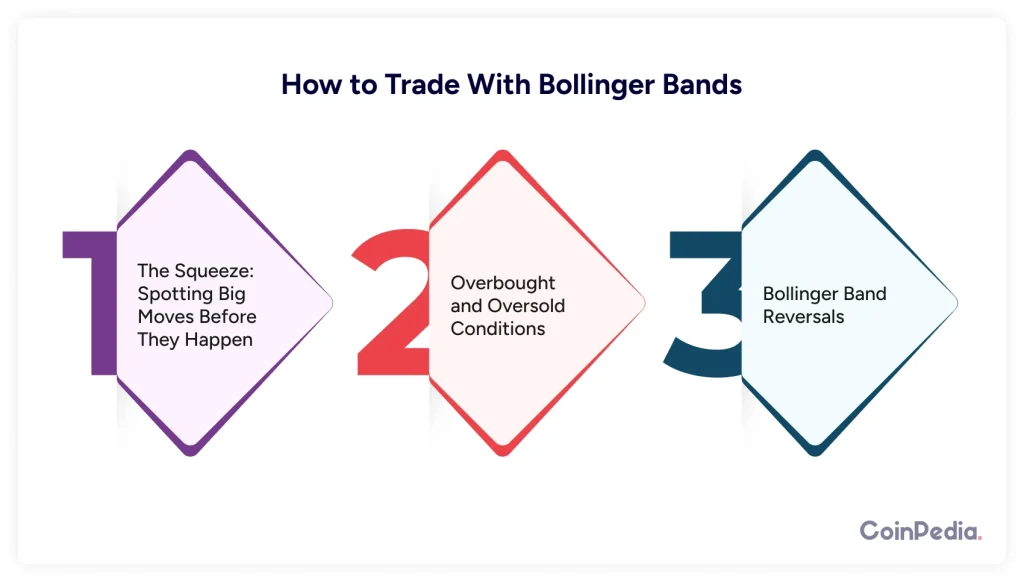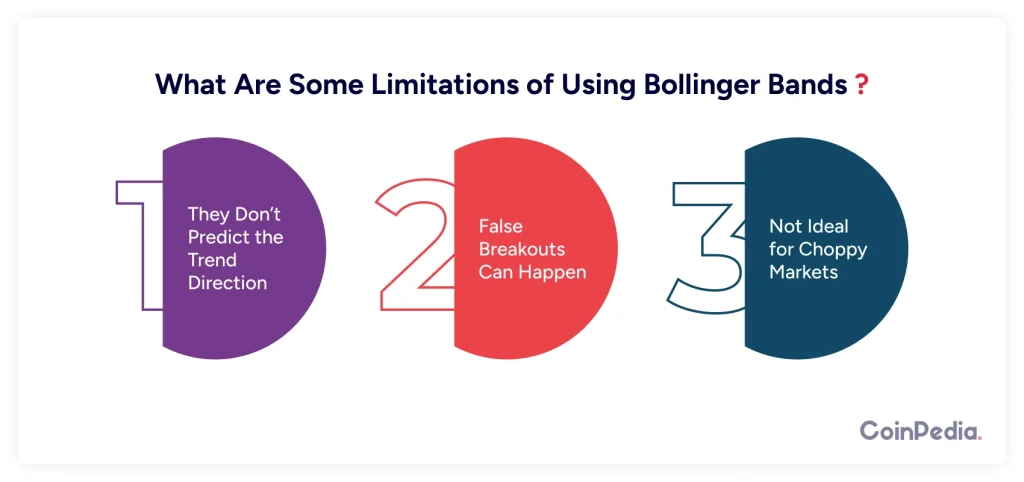
Have you ever wished you had a crystal ball to predict market moves? While that doesn’t exist, Bollinger Bands might just be the next best thing. They help traders spot trends, measure volatility, and make informed decisions. If you’ve ever wondered how some traders seem to buy at the perfect time and sell before the market drops, chances are they’re using Bollinger Bands.
In this guide, we’ll break everything down in simple terms. By the end, you’ll know exactly how to use this powerful tool to your advantage.
What Are Bollinger Bands?
Bollinger Bands are a technical analysis tool used to measure market volatility. Imagine them as an elastic band around the price of an asset. When the market is calm, the bands contract. When there’s high volatility, they expand. This gives traders clues about potential price movements.
A standard Bollinger Band consists of three lines:
- Middle Band – This is a simple moving average (SMA), usually set to 20 periods. It acts as the baseline.
- Upper Band – This is the middle band plus two standard deviations. It shows the upper boundary of expected price movement.
- Lower Band – This is the middle band minus two standard deviations. It marks the lower boundary.
These bands help traders determine whether an asset is overbought (trading near the upper band) or oversold (trading near the lower band).
Example:
Imagine Bitcoin is trading at $30,000. If the upper Bollinger Band is at $32,000 and the lower band is at $28,000, it means that Bitcoin’s price is moving within this range most of the time. If Bitcoin suddenly touches the lower band, it could be a sign that it’s oversold and might bounce back up.
Who Is John Bollinger?
John Bollinger is the man behind Bollinger Bands. He’s a well-known technical analyst who developed this indicator in the 1980s. He wanted a tool that could adapt to market conditions instead of being rigid like other indicators at the time.
Bollinger Bands became one of the most popular tools among traders because they provide real-time insights into volatility. John Bollinger himself has always emphasized that no single indicator is perfect, and Bollinger Bands should be used alongside other tools for better accuracy.
How to Trade With Bollinger Bands

There are several ways to use Bollinger Bands in your trading strategy. Let’s go through some of the most effective ones.
1. The Squeeze: Spotting Big Moves Before They Happen
One of the most powerful Bollinger Band strategies is called the Squeeze. This happens when the bands contract tightly around the price. It signals that the market is in a period of low volatility and a breakout is coming.
How to trade it:
- If the price breaks above the upper band after a squeeze, it could be a bullish signal.
- If the price breaks below the lower band, it could be a bearish signal.
Example:
Suppose Ethereum is trading sideways, and the Bollinger Bands are narrowing. Suddenly, the price breaks above the upper band with high volume. This could be a sign that Ethereum is about to surge.
2. Overbought and Oversold Conditions
When the price touches the upper band, it means the asset might be overbought and due for a pullback. When it touches the lower band, it might be oversold and ready to bounce.
How to trade it:
- If the price touches the upper band and starts to decline, it could be a good time to sell or short.
- If the price touches the lower band and starts rising, it could be a buying opportunity.
3. Bollinger Band Reversals
Sometimes, price movements outside the bands can be misleading. A common strategy is to look for price reversals when an asset moves sharply beyond the bands.
How to trade it:
- If the price shoots far above the upper band and quickly returns inside, it might be a false breakout, signaling a sell.
- If the price drops below the lower band and bounces back inside, it could be a buy signal.
How Reliable Are Bollinger Bands?
Bollinger Bands are a great tool, but they are not foolproof. They work best in combination with other indicators like RSI (Relative Strength Index) or Moving Averages.
Strengths:
- Helps identify overbought and oversold conditions.
- Provides insights into volatility and potential breakouts.
- Works well across different timeframes.
Weaknesses:
- False signals can occur, especially during strong trends.
- Doesn’t predict the direction of the breakout, only that volatility is changing.
- Best used with confirmation from other indicators.
What Are Some Limitations of Using Bollinger Bands?

No indicator is perfect, and Bollinger Bands are no exception. Here are a few limitations to keep in mind:
1. They Don’t Predict the Trend Direction
Bollinger Bands tell you when the market is volatile or calm, but they don’t tell you whether the price will go up or down. This is why traders often pair them with other indicators.
2. False Breakouts Can Happen
Sometimes, price movements beyond the bands don’t mean a reversal. Instead, the price might continue moving in the same direction. This is why looking at volume and other signals is important.
3. Not Ideal for Choppy Markets
In sideways or choppy markets, Bollinger Bands can generate many false signals. If there’s no strong trend, the price may keep bouncing around within the bands, making it hard to trade with confidence.
Final Thoughts: Should You Use Bollinger Bands?
Absolutely! Bollinger Bands are one of the most effective tools for understanding market volatility. They can help you spot great trade opportunities, but like any tool, they work best when used correctly.
Key takeaways:
- Bollinger Bands measure market volatility and help traders find overbought/oversold conditions.
- The Squeeze strategy helps predict big moves before they happen.
- Overbought and oversold signals can help with timing entries and exits.
- Bollinger Bands work best with other indicators like RSI or Moving Averages.
If you’re serious about trading, practice using Bollinger Bands on a demo account before trading with real money. The more you use them, the better you’ll get at spotting profitable opportunities.
FAQs
Yes! Bollinger Bands work on stocks, forex, crypto, commodities, and even indices.
They can be used on any timeframe, but shorter timeframes generate more noise, while longer time frames provide more reliable signals.
The default 20-period setting works well for most traders, but you can experiment with different settings based on your strategy.
Yes, but you need to combine them with fast-moving indicators like RSI or MACD for better precision.
Look for confirmation signals such as increased volume or other technical indicators like moving averages to confirm breakouts.
Well Done! You have now completed the Lesson.
Complete the Quiz and Get Certified! All The Best!
We'd Love to Hear Your Thoughts on This Article!
Was this writing helpful?
 Yes
Yes  No
No
Disclaimer and Risk Warning
The information provided in this content by Coinpedia Academy is for general knowledge and educational purpose only. It is not financial, professional or legal advice, and does not endorse any specific product or service. The organization is not responsible for any losses you may experience. And, Creators own the copyright for images and videos used. If you find any of the contents published inappropriate, please feel free to inform us.



